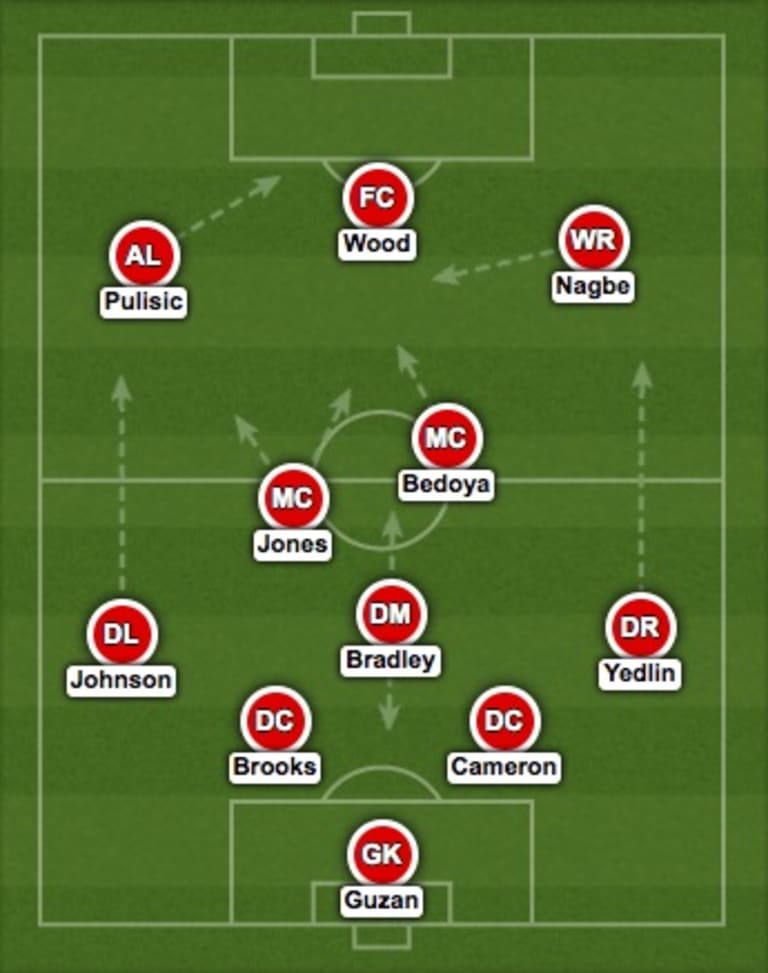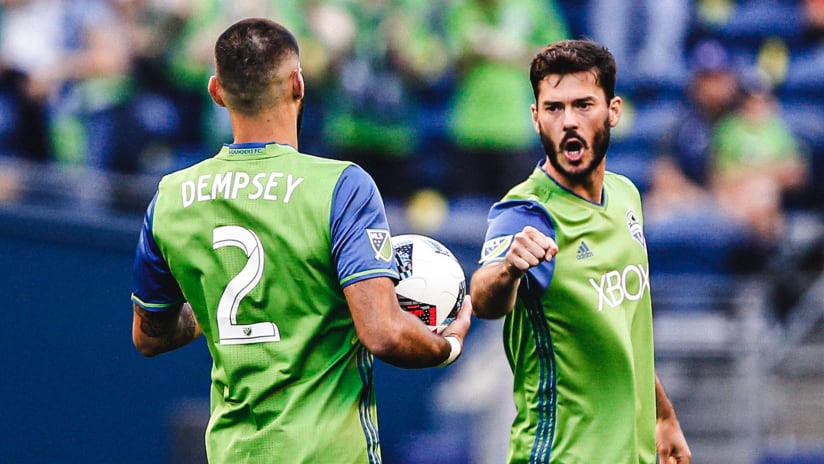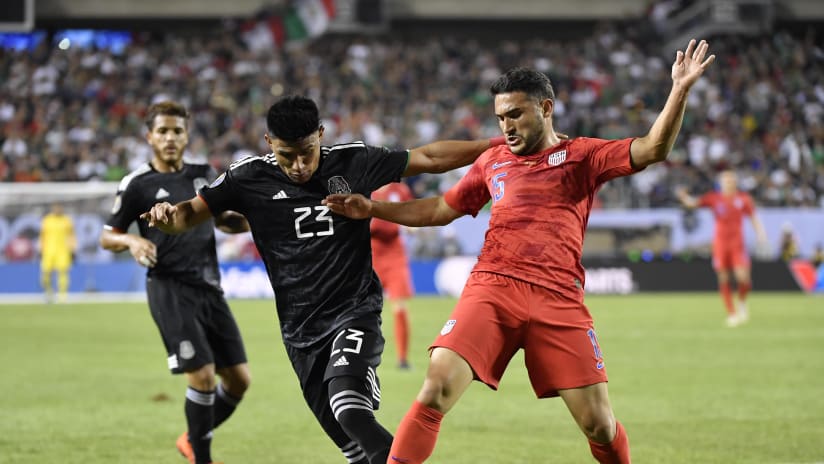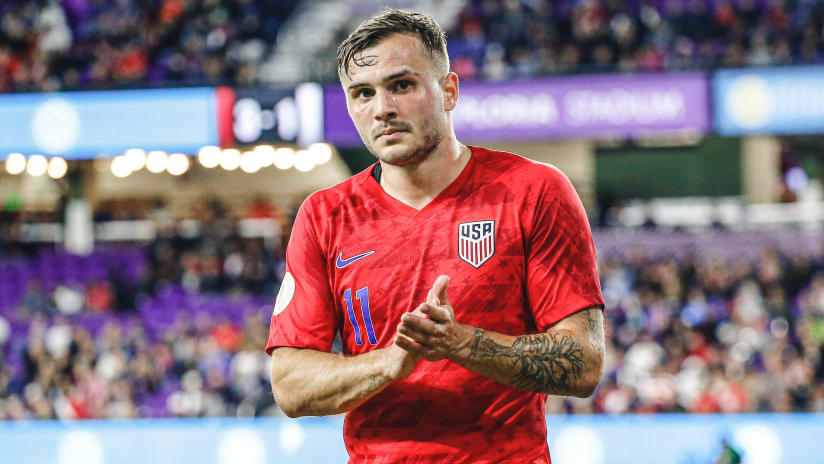Editor's Note: With Copa America Centenario kicking off in the United States on Friday, June 4, SoundersFC.com contributor Will Parchman takes a look at what's ahead in the tournament for the U.S. Men's National Team. Check back throughout Copa for more analysis from Parchman as the USMNT takes on Colombia, Costa Rica and Paraguay in Group A play.
The Copa America Centenario kicks off on June 3. Jurgen Klinsmann says the U.S. can make the semifinals.
Do you believe him?
Optimism and pessimism are co-mingling in this cycle like few before it. On one hand, the U.S. is coming off a tragically poor 2015 in which it badly underachieved in the Gold Cup, the team’s biggest competition of the year. The U.S. lost to Jamaica in the semifinals, then Panama in the third place game and was out-shot by a margin of nearly two-to-one over the course of the event.
And yet, there is hope.
Klinsmann essentially tripped and fell into a possible alignment for the future in the second half of a recent 1-0 friendly win over Ecuador in Frisco. After a poor first half, the U.S. inserted a front line Christian Pulisic, Bobby Wood and Darlington Nagbe, and all three sparked a massive regeneration in attacking panache. Nagbe scored his first national team goal, and the 17-year-old Pulisic followed suit a few days later in a 4-0 romp over Bolivia.
The future is spelled out in lights with those three leading the charge. They have an average age shy of 22. What’s more, Klinsmann actually played Michael Bradley in his natural holding midfield role, and he was explosively productive. With Alejandro Bedoya and Jermaine Jones running channels in front, Bradley was free to cover space and drop in dangerous diagonal balls for a change.
Colombia awaits. As the host country, the U.S. has the honor of playing in the opening match, against the lethal South Americans in Santa Clara, Calif. at Levi's Stadium. And suddenly Klinsmann has a few serious decisions to make.
If I was lining up an XI for Friday night’s curtain-raiser, this is the direction I’d go. I’ll explain in a minute.

The most obvious thing you’ll notice off the bat, perhaps, is the absence of Sounders superstar Clint Dempsey. There’s a method to that madness.
As anyone who’s watched Dempsey in Seattle this year, it’s clear his best use at this stage in his career is as a second forward. As he proved alongside Obafemi Martins last year, he’s still an All Star-caliber forward in that role, but he needs the right formation and the right pieces around him. That formation is the 4-4-2 (which Klinsmann won’t and shouldn’t use), and those pieces involve a lot of traditional two-way width (which the U.S. doesn’t have).
I think Klinsmann will probably start Dempsey anyway, and there’s certainly nothing wrong with that. Dempsey is built for big stages like this one –he’s one of the few offensive options in this group who has played in a game as big as Friday’s opener – and he proved against Guatemala earlier this year that when the US needs a goal, Dempsey’s as good a bet as anyone to be the man to get it. But with Dempsey’s international career coming to a close sometime in the near future, it’s intriguing to think how the team might adjust in the future, and the lineup above gives us a glimpse how it might be done in Russia 2018.
The real secret weapons for the U.S. at the coming Copa America, meanwhile, are the fullbacks, and in the pinching width in front of them. Indeed, it could determine the tournament for the Americans.
I have Pulisic, the Borussia Dortmund ingenue, on the left, where he’s elbowed his way into legitimate starting minutes in the Bundesliga. He’s opposed by Nagbe, not Bedoya. Nagbe has emerged as a legitimate inside winger in the past few months on the national team level. By deploying Nagbe wide, you force defenders to commit to a player raking across the front of goal and interchanging with emergent No. 1 striker Bobby Wood and Pulisic. There is so much attacking fun to be had with those three in front.
I doubt Klinsmann will start Pulisic. It’s hard to pull the trigger on a 17-year-old in the first game of a tournament like this; but that doesn’t mean I think it’s the right decision. Play your kids.
The fullbacks will keep the many wide threats in a difficult group featuring Colombia, Paraguay and Costa Rica honest. Fabian Johnson was a Bundesliga Best XI player last season with Borussia Monchengladbach, while former Sounder DeAndre Yedlin emerged as an easy first-team right back at Sunderland in the English Premier League.
Both are absolute raiders. Johnson and Yedlin have both played in the midfield in the past, and in this setup they’ll do plenty of overlapping on the pinched-in Pulisic and Nagbe. Some might argue Johnson’s best position at the national team level is at left mid, which would probably force late call-up Edgar Castillo into action at left back less than a week after losing in the Liga MX Liguilla final with Monterrey. Castillo, it should be said, was the defender who was beat at the far post for Pachuca’s dramatic late winning goal.
And then you have Bedoya knitting together passages in the middle, while Jermaine Jones goes on his wandering foraging runs and Bradley sits deep as the regista the U.S. has always wanted.
Yes, this team has potential. And it’s worth getting your hopes up, if only slightly.
Finding appropriate expectation is a constant struggle with the U.S. Men’s National Team. They are fickle when it comes to results, putting in unbelievable surprise performances (2009 Confederations Cup) and stinkers (2015 Gold Cup) in equal measure. But there’s little question that simply emerging from the group stage isn’t good enough anymore. That’s a baseline necessity.
What comes next is up for debate. If the team plays well, something tells me going out in the first knockout round won’t be cause for much handwringing. Style is important, and with this lineup the U.S. could display more of it than they have in some time.
As for the semifinals? We’ll have to see about that.





